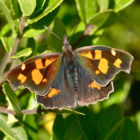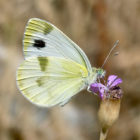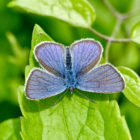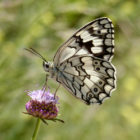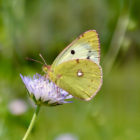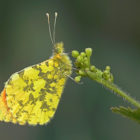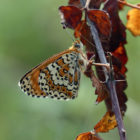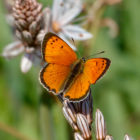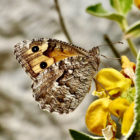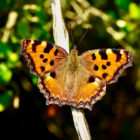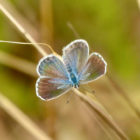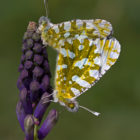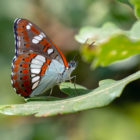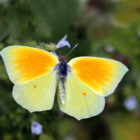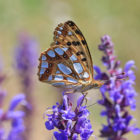Dates & Prices |
BOOK NOW |
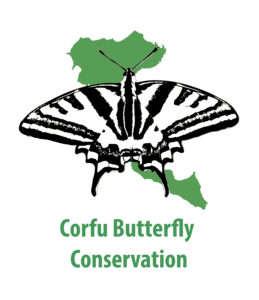
Date: May 2026 (dates TBA)
Price: £1,495 Places available
Single Room Supplement: £150
Deposit: £150 per person
Price Includes: All meals, accommodation, all ground transport including transfers, services of guides, holiday report
Not included:Flights, travel insurance, entry fees, drinks & any other personal items
Conservation Donation: Corfu Butterfly Conservation
Leader: Dan & Libby Danahar
Group Size: Minimum of 4 and a maximum of 12 guests plus 2 leaders
Holiday Highlights
- A unique opportunity to take part in surveying and mapping the island’s butterflies, a project running from 2021 – 2025
- learn about a unique butterfly conservation organisation
- Have a direct and positive impact on the conservation of butterflies in Corfu
- See a good number of the 75 confirmed species on the island
- Special species we will look out for include Southern Swallowtail & Eastern Orange-tip
- Take part in the Corfu Big Butterfly Race – a fun one day event
- Led by Dr Dan Danahar, knowledgable butterfly enthusiast and guide from the UK and an energetic driving force behind Corfu Butterfly Conservation
- In support of Corfu Butterfly Conservation with 10% profits donated
We invite you to join us for our unique conservation focused tour on the Greek island of Corfu!
Corfu is an island located in the Ionian Sea and even by Mediterranean standards it’s small, spanning just 39 miles by 17 miles at its longest and widest points. At its closest it sits just 2.7Km off the coast of the Albanian mainland, just above where Albania shares its border with Greece. Made famous by Gerald Durrell’s autobiographical account of his time on the island as a child, Corfu has long been considered a natural gem in the Ionian archipelago, and the Old Town is listed as a UNESCO World Heritage Site. Indeed, Lee Durrell, Gerald’s widow, lives on Corfu now and has kindly agreed to let us visit her garden on this trip.
Founded in 2019, Corfu Butterfly Conservation has listed 75+ species of butterfly on the island with 59 species recorded during the month of May making this the very best time to visit Corfu to see butterflies. This very high number of species is in part due to a changeover in the species assemblage. We have timed this tour to coincide with this alteration in the butterfly communities to allow you to witness the departure of the spring butterflies, along with the arrival of the summer species. Two of the key species we’ll seek this week are the Southern Swallowtail and Eastern Orange Tip.
There is a reason why the Southern Swallowtail is the emblem of Corfu Butterfly Conservation; the species is iconic. Of the four species in the Papilionidae family found on Corfu, many consider the Southern Swallowtail the most enthralling. We will spend some time searching for this stunning butterfly in both lowland and upland locations.
The Eastern Orange Tip meanwhile is an enigmatic butterfly, limited in its distribution to the north-eastern slopes of Corfu’s uplands, by the distribution of its larval foodplant, Woad – Isatis tinctoria. The Flora Ionica, which covers the thirteen major islands in the Ionian archipelago, describes the distribution of Woad as being limited solely to Corfu and so we believe that the Eastern Orange Tip is unlikely to occur on any other Ionian Island. The occurrence of Woad on Corfu has been known about for two centuries but it is unclear if this plant is indigenous and therefore the origins of the butterfly also remain uncertain. We shall spend time seeking out these pale yellow beauties to help Corfu Butterfly Conservation further their mapping of the species’ distribution on the island.
One of the reasons why Corfu has so many different butterfly species, despite its diminutive size is because there are areas that are elevated. This additional altitude, up to 906 metres in the case of Mount Pantokrator, increases the prospects for greater environmental variation which creates additional habitats. Over the last 60 years there has been a major shift in the Corfiot economy from one that was based in an agrarian lifestyle to that which is now based on tourism. This adjustment has led to major changes in land use and grazing is one practice that has been greatly reduced. Corfu Butterfly Conservation has anecdotal evidence that the distribution of species like the Mazarine Blue Cyaniris semiargus has been reduced by this alteration. During the week we will explore habitats which are representative of the older landscapes, as depicted by the artist and poet Edward Lear, to discover what butterflies can be found in these habitats now.
While here, we will also take part in a Big Butterfly Race, a fun event racing around the island with a local enthusiast and teams of up to 6 (we may split into two teams for this!) competing to see as many species as possible in a day.
In the first Big Corfu Butterfly Race, the winning team counted 38 species. This is more than 50% of all the species found on the entire island. The winning list was:
- SOUTHERN FESTOON Zerynthia polyxena,
- SCARCE SWALLOWTAIL Iphiclides podalirius,
- SOUTHERN SWALLOWTAIL Papilio alexanor,
- MALLOW SKIPPER Carcharodus alceae,
- GRIZZLED SKIPPER Pyrgus malvae,
- OBERTHÜR’S GRIZZLED SKIPPER Pyrgus armoricanus,
- LULWORTH SKIPPER Thymelicus acteon,
- WOOD WHITE Leptidea sinapis,
- CLEOPATRA Gonepteryx cleopatra,
- CLOUDED YELLOW Colias croceus,
- ORANGE-TIP Anthocharis cardamines,
- EASTERN ORANGE TIP Anthocharis damone,
- EASTERN DAPPLED WHITE Euchloe ausonia,
- EASTERN BATH WHITE Pontia edusa,
- LARGE WHITE Pieris brassicae
- SMALL WHITE Pieris rapae,
- GREEN-VEINED WHITE Pieris napi,
- SMALL COPPER Lycaena phlaeas,
- GRECIAN COPPER Lycaena ottomana
- GREEN HAIRSTREAK Callophrys rubi,
- HOLLY BLUE Celastrina argiolus,
- GREEN UNDERSIDE BLUE Glaucopsyche alexis,
- EASTERN BATON BLUE Pseudophilotes vicrama,
- LANG’S SHORT-TAILED BLUE Leptotes pirithous,
- SMALL BLUE Cupido minimus,
- MAZARINE BLUE Cyaniris semiargus,
- BROWN ARGUS Aricia agestis,
- COMMON BLUE Polyommatus icarus,
- SOUTHERN WHITE ADMIRAL Limenitis reducta,
- PAINTED LADY Vanessa cardui,
- RED ADMIRAL Vanessa atalanta,
- SPOTTED FRITILLARY Melitaea didyma,
- GLANVILLE FRITILLARY Melitaea cinxia,
- NETTLE-TREE BUTTERFLY Libythea celtis,
- WALL BROWN Lasiommata megera,
- SMALL HEATH Coenonympha pamphilus,
- DELATTIN’S GRAYLING Hipparchia volgensis,
- MEADOW BROWN Maniola jurtina.
Can we beat this total?
Conservation in action
If you choose to participate in this tour, much of the time you will spend observing and photographing butterflies will also help Corfu Butterfly Conservation map the distribution of each species, we encounter. In addition, 10% of the profits made from this tour will be donated to aid the work of Corfu Butterfly Conservation
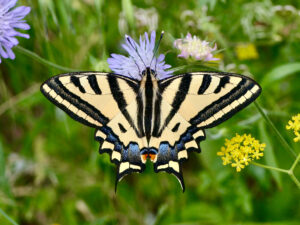
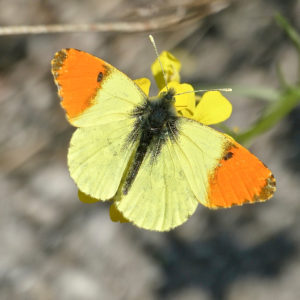


Day 1 – Monday 19th May 2025: Arrival at Corfu airport and transfer to our hotel
Dependant on our flight times, having settled into our hotel there may be time for a walk before our evening meal.
Day 2 – Tuesday 20th May 2025: In search of the Southern Swallowtail – Papilio alexanor
Whilst our mapping of the Southern Swallowtail’s distribution is still incomplete, we do know that for this species (as is the case for many other species on Corfu) there is a lag between the emergence of lowland populations and those of the uplands and so this is our first opportunity to visit a lowland site near to Pendati where we intend for you to observe courtship and oviposition. If the season proves unpredictable, we will still have other opportunities to observe this butterfly in the upland context. We will also spend this first day familiarising ourselves with some of the common mid-season butterflies of Corfu. These include: Scarce Swallowtail – Iphiclides podalirius, Common Swallowtail – Papilio machaon, Mallow Skipper – Carcharodus alceae, Oriental Marbled Skipper Muschampia orientalis, Cleopatra – Gonepteryx cleopatra, Clouded Yellow – Colias croceus, and Eastern Dappled White – Euchloe ausonia.
At the end of the day’s excursions, individuals may have the opportunity to explore the Corfu Lake District before departing for our evening meal.
Day 3 – Wednesday 21st May 2025: In search of the Eastern Orange Tip – Anthocharis damone
Whilst the EU Red Data Status (2010) classified the Eastern Orange Tip as of “least concern” its limited distribution on Corfu makes it vulnerable in the Ionian context. We will spend this day encountering other species of butterfly whilst tracking down new sightings of the Eastern Orange Tip to enable Corfu Butterfly Conservation to improve its mapping of this ‘vulnerable’ species’ distribution. Additional species may include: Scarce Swallowtail – Iphiclides podalirius, Southern Swallowtail – Papilio alexanor, Common Swallowtail – Papilio machaon, Mallow Skipper – Carcharodus alceae, Grizzled Skipper – Pyrgus malvae, Oberthür’s Grizzled Skipper – Pyrgus armoricanus, Cleopatra – Gonepteryx cleopatra, Clouded Yellow – Colias croceus, and Eastern Dappled White – Euchloe ausonia and Green underside Blue – Glaucopsyche alexis.
Day 4 – Thursday 22nd May 2025: Exploring Mount Pantokrator and the surrounding area.
Today we will explore habitats on the slopes of Mount Pantokrator, which are representative of the older landscapes, to discover what butterflies can be found in these habitats now.
Species may include: Scarce Swallowtail – Iphiclides podalirius, Southern Swallowtail – Papilio alexanor, Common Swallowtail – Papilio machaon, Mallow Skipper – Carcharodus alceae, Oriental Marbled Skipper Muschampia orientalis, Grizzled Skipper – Pyrgus malvae, Cleopatra – Gonepteryx cleopatra, Clouded Yellow – Colias croceus, and Eastern Dappled White – Euchloe ausonia, Mazarine Blue – Cyaniris semiargus, Green underside Blue – Glaucopsyche alexis, Small Blue – Cupido minimus, Southern White Admiral – Limenitis reducta, Queen of Spain Fritillary – Issoria lathonia and Glanville Fritillary – Melitaea cinxia.
Day 5 – Friday 23rd May 2025: The Ropa Valley and tea with Mrs Durrell.
The Corfu Butterfly Survey has mapped a lot of the island but there are still holes in this mapping because of lower recording effort in those areas. During the morning you will be making a major contribution by investigating one of those areas. The Ropa valley was formally a lake that was drained and later used as pasture. In cursory visits we have encountered the Hungarian Skipper – Spialia orbifer, Grecian Copper – Lycaena ottomana, Large Tortoiseshell – Nymphalis polychloros and Glanville Fritillary – Melitaea cinxia but we don’t really know what to expect at this time of year and so, by visiting to find out, you will be contributing to the understanding of what species occur here.
In the afternoon, we will visit the home of Dr Lee Durrell, for tea, where we will meet her at Villa Louisa to see how she is managing her wild garden for butterflies and other animals. Lee has also agreed to sign copies of the Butterflies of Corfu posters for those who want one.
Species we may find in Lee’s garden include: Scarce Swallowtail – Iphiclides podalirius, Common Swallowtail – Papilio machaon, Mallow Skipper – Carcharodus alceae, Grizzled Skipper – Pyrgus malvae, Wood White – Leptidea sinapis, Cleopatra – Gonepteryx cleopatra, Clouded Yellow – Colias croceus, and Eastern Dappled White – Euchloe ausonia, Small Copper – Lycaena phlaeas, Grecian Copper – Lycaena ottomana, Green underside Blue – Glaucopsyche alexis, Brown Argus Aricia agestis, Common Blue – Polyommatus icarus, Southern White Admiral – Limenitis reducta, Glanville Fritillary – Melitaea cinxia, Small Heath – Coenonnympha pamphilus and Meadow Browns – Maniola jurtina .
Day 6 – Saturday 23th May 2025: The Lefki quarry walk and Roda Olive meadow.
A day in the uplands of Corfu will allow us to take in many remarkable vistas whilst on this circular walk which starts and ends in Lefki. In these limestone hills we will look for the Eastern Baton Blue – Pseudophilotes vicrama in its optimum habitat, as well as investigate the Nettle tree in the centre of Lefki for the larvae of the Nettle-tree Butterfly – Libythea celtis.
On our return from this walk we will visit the Olive grove meadows, in Roda, of Jane Barry, Corfu Butterfly Conservation’s top recorder. Here we will learn why Olive groves, properly managed, can be such great habitats for diverse Corfiot butterfly communities.
Additional species may include: Scarce Swallowtail – Iphiclides podalirius, Southern Swallowtail – Papilio alexanor, Common Swallowtail – Papilio machaon, Mallow Skipper – Carcharodus alceae, Hungarian Skipper – Spialia orbifer, Oriental Marbled Skipper Muschampia orientalis, Grizzled Skipper – Pyrgus malvae, Cleopatra – Gonepteryx cleopatra, Clouded Yellow – Colias croceus, and Eastern Dappled White – Euchloe ausonia, Grecian Copper – Lycaena ottomana, Green underside Blue – Glaucopsyche alexis, Southern White Admiral – Limenitis reducta and Glanville Fritillary – Melitaea cinxia.
Day 7 – Sunday 25th May 2025: The Big Corfu Butterfly Race.
How many butterfly species do you think you might be able to see in one day? On this day we will try to record as many species as we can, travelling to multiple sites and spurring ourselves on with enthusiasm. It has been described by a butterfly enthusiast as “the best day of butterflying in my life” and promises to be a day to remember!
Day 8: – Monday 26th May 2026: Transfer to Corfu Airport
Our final day is once again dictated somewhat by our flight times but time permitting, we will make one last stop to the Kaiser’s chair. From this viewpoint on the central western coast which overlooks Corfu town and the countryside in between, we will look for species we may have missed before our continuing our return journey to the airport.
- Long-tailed Blue
- Southern Swallotail
- Eastern Orange-tip
- Nettle-tree Butterfly
- Krueper’s Small White (Artogeia krueperi)
- Mazarine Blue
- Balkan Marbled White
- Clouded Yellow helice form (Colias crocea f. helice)
- Eastern Orange-tip
- Glanville Fritillary (Melitaea cinxia)
- Grecian Copper
- Delattin’s Grayling (Hipparchia volgensis)
- Two-tailed Pasha
- Large Tortoiseshell
- Eastern Baton Blue
- Eastern Dappled White
- Green-underside Blue
- Southern White Admiral
- Cleopatra (Gonepteryx cleopatra)
- Queen of Spain Fritillary
- To encourage the continued growth of a responsible community of Corfu butterfly enthusiasts.
- To survey the butterflies of Corfu and determine the number of species present on the island, their distribution, as well as their flight periods.
- To find out if the butterfly communities of Corfu could be used as indicators of good habitat quality and if so help with the conservation of other Corfiot wildlife.
- To identify potential losses of species and habitats and inform the Greek authorities about which needs protecting.
- To publish the butterfly survey results and the conclusions drawn from this data in the first comprehensive Corfu Butterfly Atlas.
- To encourage eco-tourism outside the main tourist season bringing extra revenue to Corfu.
Alice Hunter is a self-taught naturalist and professional wildlife photographer with a keen interest in botany and a particular love of macro subjects. Her passion for the natural world began as a child growing up in the wilds of Herefordshire, encouraged by her family and has been nurtured ever since.
She now enjoys sharing her love of the natural world with guests on the wildlife watching and photography tours that she leads for Greenwings.
Alice also enjoys nature writing and has had work published in a series of books for the Wildlife Trusts celebrating the seasons. Alice has a degree in Art History and enjoys combining visits to historical sites with seeing how nature has reclaimed them.
You can see more of her work at www.hunterphotos.co.uk





